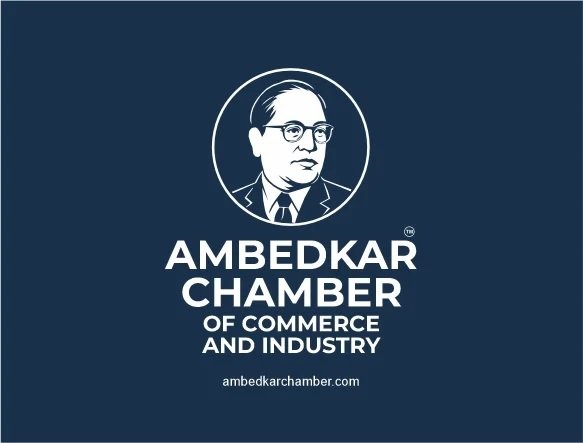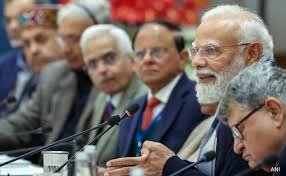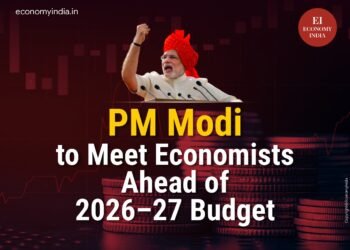According to a report in Economic Times, Economists want the government to do the heavy lifting in the February 1 budget to support economic recovery amid the wave of Covid infections, proposing higher allocations for capital spending and tax incentives to spur private investment.
Other suggestions include reduction in the goods and services tax (GST) for a limited duration to spur demand, front-loading of transfers to states, income-enhancing or support measures, and subsidised credit to small and medium enterprises and contact-intensive sectors.
ET spoke to economists after a number of them pared their growth forecasts for FY22 and the current quarter following the rapid spread of the highly infectious Omicron variant of the coronavirus.
Nomura recently lowered its GDP forecast for the March quarter to 3.2% from 5.2% projected earlier and to 8.7% for FY22 compared with 9.2% estimated earlier.
The government pegged FY22 growth at 9.2% in the first advance estimates released last week, below the Reserve Bank of India’s 9.5% forecast.
“India is in the midst of its third wave of Covid-19,” Nomura said on Thursday. “We expect higher caseloads, but assume a shorter duration for the third wave (one month, from trough to peak), which should mean economic damage is contained within Q1 2022 and limited to delaying a recovery in contact-intensive services.”
Infra-focused Capex Needed
Most economists suggested higher public capital expenditure by the Centre as they expect private investment to be stagnant barring a few sectors and states could remain cautious due to fiscal constraints.
“Given that fiscal position has been reasonably sound during April-November, the forthcoming budget will need to continue pressing the pedal hard on infrastructure-focused capital expenditure as the private corporate investment cycle is yet to turn decisively,” said Crisil chief economist DK Joshi.
The boost is also crucial as Nomura expects India’s growth cycle to begin decelerating from the second half of 2022, beyond the growth gyrations caused by the third wave.
“We expect reflecting weaker consumption (due to scarring effects and high inflation), weaker export growth and subdued private capex due to low capacity utilisation,” it said.
Bank of Baroda chief economist Madan Sabnavis sought an easing of the fiscal deficit target.
“Earmark additional 0.5% over and above what is fixed as fiscal deficit,” he said. “So if the government plans 6.5%, it can add 0.5% more for capex. A push of 0.5% would mean an increase of Rs 1.3 lakh crore in capex. This will be a big push and can be funded through borrowing.”
The government could also consider a tax break for companies in the form of an investment allowance to be used in one-two years to give private investment a push.
ICRA chief economist Aditi Nayar called for expedited capital spending and frontloading transfers to states to the extent possible to help them to prioritise capital spending as well. “This will help to partly counteract the adverse impact of the third wave on contact intensive services,” she said.
ET had on Friday reported the government may raise capital expenditure sharply in the FY23 budget. It has budgeted Rs 5.54 lakh crore in the current year against Rs 4.39 lakh crore in the revised estimate of FY21.
Private Consumption
India’s private final consumption expenditure, a measure of demand, is projected to rise a tepid 6.9% in FY22 from a year ago but is still 2.9% below the FY20 level. The share of private consumption in GDP is expected to moderate further to 54.8% in FY22 from 56% in FY21 and 57.1% in FY20.
“There can be a one-year window for a scheme which halves GST rates on certain consumer goods like auto or electronics so that there is an incentive to spend in order to boost consumption,” Sabnavis said. QuantEco Research founder Shubhada Rao suggested a focus on consumption.
“The overarching theme for the government should be a thrust on consumption which will unleash a virtuous cycle of a consumption-led broad-based recovery in the investment cycle,” Rao said. “Augmenting personal disposable income especially for the rural population and the urban poor to support consumption should be the underlying theme of this budget. In addition to MGNREGA, focus should also be on creating jobs through infrastructure projects for sustainable income generation.”
Viewing the economic recovery as lopsided with uncertainty on the sustainability of the revival, Kotak Mahindra Bank economist Upasna Bhardwaj said the government’s focus is expected to remain on aiding rural and informal sector demand and reviving infrastructure.
“The scars on the labour markets, small-scale units, along with contact-based services, will need heavy lifting through sector-focused tax exemptions and income enhancement measures,” Bhardwaj said.
Support in the form of easy credit availability at subsidised rates should be given to MSMEs and contact-intensive services like hospitality, Rao said.
Barclays chief India economist Rahul Bajoria said improving growth prospects are creating more room to raise spending.
“We expect to see continued focus on infra-related capex, with extra outlays for the production linked incentive and other job intensive manufacturing sectors,” Bajoria said. (Economic Times)















